Since Henry Ford launched its first T-car in 1908, the car has gone through more than a hundred years. From the simplest transportation tools to the various automation equipments nowadays, car entertainment is fully equipped. Cars are becoming more advanced and are being given more and more features. All of this comes from the joint efforts of OEMs, system integrators and semiconductor manufacturers. The growing automotive electronics market is attracting the attention of many manufacturers, and ADI is one of them. As a well-known manufacturer of semiconductor analog devices, ADI has been developing and investing in communications infrastructure, industrial automation, industrial instrumentation, automotive electronics, and healthcare with leading data conversion and signal processing technologies. Especially in the field of automotive electronics, it has achieved particularly excellent results. According to ADI's financial data, its automotive electronics revenue in 2014 was as high as 525 million US dollars, accounting for 18% of its total annual revenue, an increase of 8% over last year. Looking forward to the next few years, the development of automotive intelligence, the recovery of the global automotive market. The revenue of automotive electronics will increase steadily, especially in the automotive entertainment system, which has great potential for development. And this is an area where the official ADI is focused. New changes in car cockpit electronics driven by various aspects According to Vlad Bulavsky, general manager of the cockpit electronics business at ADI's Automotive Electronics Division, automotive cockpit electronics will usher in a wave of developments that are different from the past. According to him, unlike previous car cockpit electronics that only focused on traditional audio and video entertainment and navigation, today's car cockpit electronics are driven by innovative consumer electronics, communications technology, medical electronics, driverlessness and the Internet of Things. The following different trends. For example, the past automotive electronics technology was determined by the component manufacturers, which means that the car manufacturers need to know what technology the component manufacturers have to determine what technology to apply to the car, but the new trend is that the car manufacturer promotes one according to its own needs. Level or secondary suppliers to provide technology and solutions, one of which. In addition, unlike the previous research and development direction, semiconductor manufacturers will discuss with the car manufacturers in addition to communication with the parts manufacturers, and confirm the plans they need to plan the development direction of their products. In response to this trend, ADI has also developed its car cockpit electronics development strategy. In addition to focusing on the processing of car audio and video, ADI will also invest in areas such as car audio and video connections, cabin sensing, and in-vehicle communications to create products that meet the needs of modern car cockpits. ADI's extensive automotive cockpit electronics line After years of investment, ADI has launched quite a number of highly competitive products in automotive electronics, especially in the cockpit electronics sector, with the most dazzling products in audio and video. 1, rich audio solutions At the beginning of the article, we mentioned that part of ADI's technology for survival comes from its digital signal processing. This is also the foundation of ADI's range of processors in automotive electronics. Its SigmaDSP family is a representative DSP processor product. As a fully programmable single-chip audio DSP, the SigmaDSP® processor can be easily configured and tuned with SigmaStudio graphics development tools, making it ideal for automotive and portable audio products. Some SigmaDSP chips also include sample rate converters, ADCs, and DACs. "The representative products are Sigma300, Sigma200 and Sigma100, mainly for the entry-level market." Vlad Bulavsky said. The SHARC® family dominates the floating-point DSP market. Not only does it have excellent core and memory performance, but also excellent I/O throughput, the SHARC processor brings floating-point processing performance to applications where dynamic range is critical, with a price/performance ratio of 319 MFLOPS/USD. The new Griffin family for mid- to high-end markets integrates a low-power SHARC core and an ARM Cortex-A5 core to take audio processing power and system interface capabilities to new heights. In addition to these audio processors, ADI has released a new automotive audio bus, the A2B, which provides a completely new solution for automotive audio connectivity. According to Vlad Bulavsky, ADI A2B digital audio bus technology delivers high-fidelity, real-time audio transmission for cars while significantly reducing the weight of existing cable harnesses (more than 75% in major applications), improving vehicle fuel efficiency. A2B product comparison The bus has the following advantages and features: Its bandwidth is up to 50Mbps, which can transmit data, control and power information on a single pair of wires. It can execute single host, support up to 32 channels of downstream audio channels, support daisy chain, processor zero overhead, and also pass SigmaStudio graphic design environment. Fully configured for easy system level fault detection and correction, reducing time to market. The AD2410 transceiver is the first device in the family to feature new A2B technology. Unlike the existing digital bus architecture, the AD2410's system delay is fixed, kept within two audio sampling points, independent of the number of nodes, so it is especially suitable for active noise cancellation, in-vehicle communication, microphone beamforming, etc. application. In addition to reducing wiring complexity, the AD2410 provides phantom power to all slave nodes, eliminating the need for a local power supply, reducing audio system eBOM costs. 2, the video solution is also the advantage From 2012 to the present, the resolution of the display in the car cockpit has grown from the original VGA to 720p or higher. Vlad Bulavsky believes that its resolution will reach 1080P by 2016, and this number will reach 4K by 2020. The resulting bandwidth demand has also grown from 1.3 Gbit/s in 2012 to 14 Gbit/s in 2020. How to create a car cockpit video product that meets this high resolution and high bandwidth demand is another focus of ADI. Vlad Bulavsky said that Analog Devices offers a range of multi-format video converter ICs for digital processing and conversion of SDTV, EDTV, HDTV and PC-RGB signals in digital displays, which are widely used in automotive electronics. And ADI's investment in these areas is also persevering. From the ADV718X series of video decoders in the car market to the video transmission of standards and interfaces such as HDMI/MHL/MIPI, ADI has corresponding chips, and has been widely praised by the market. When asked about the future development of cockpit electronics, ADI will be there when it will be invested. Vlad Bulavsky replied: "ADI will focus on R&D and investment in new automotive technologies such as advanced sensing, high-end signal processing, and workshop communication in the future." The ultimate goal is to provide a comfortable and safe driving experience for everyone. Dongguan Yijia Optoelectronics Co., Ltd. , https://www.everbestlcdlcms.com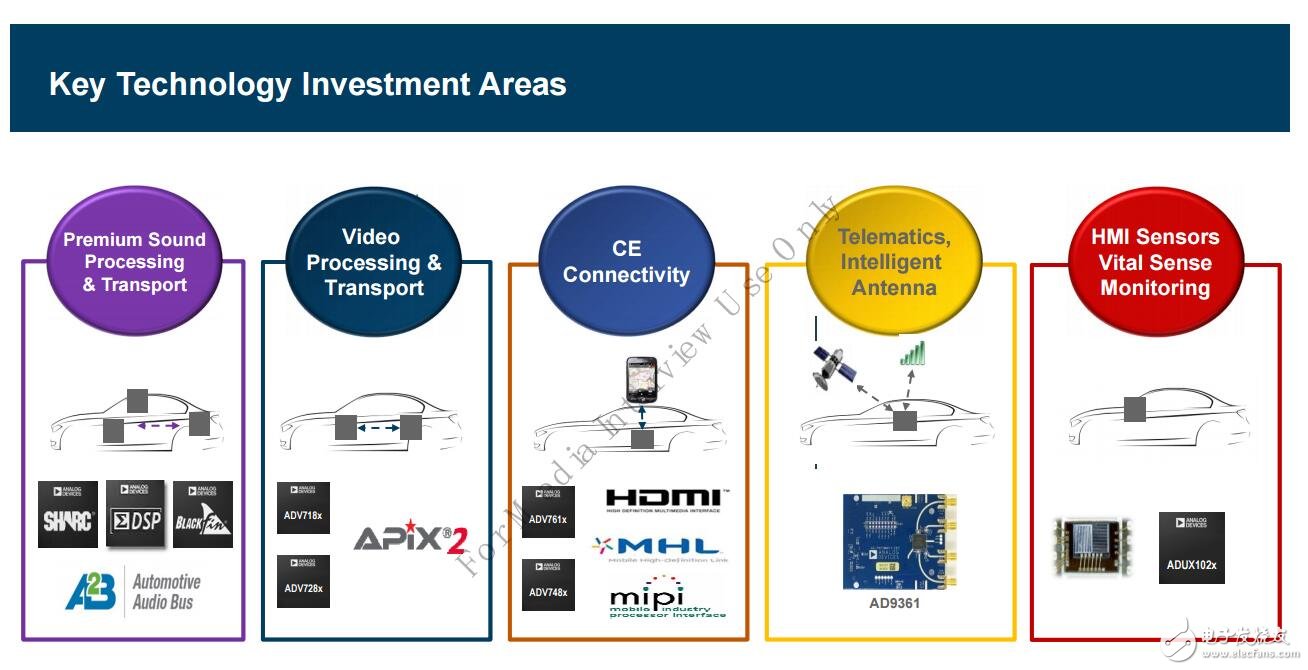
ADI's main investment area in automotive cockpit electronics 
Vlad Bulavsky, General Manager, Cockpit Electronics Business, Automotive Electronics Division, Analog Devices 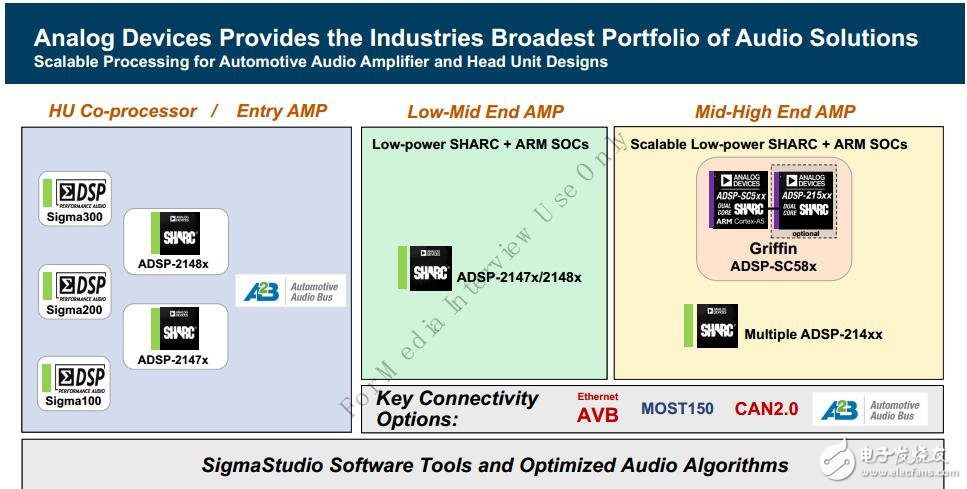
ADI's rich audio solutions 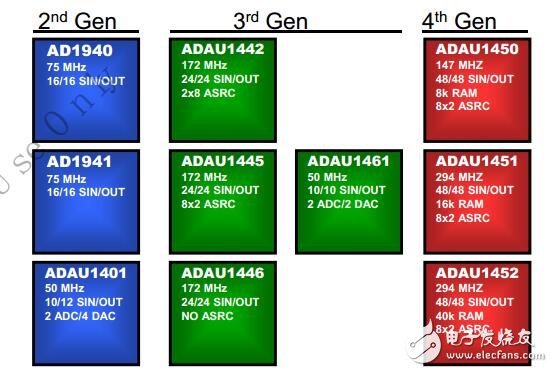
ADI full range of SigmaDSP 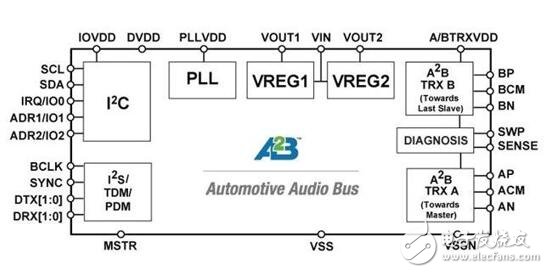
A2B audio bus interface introduction 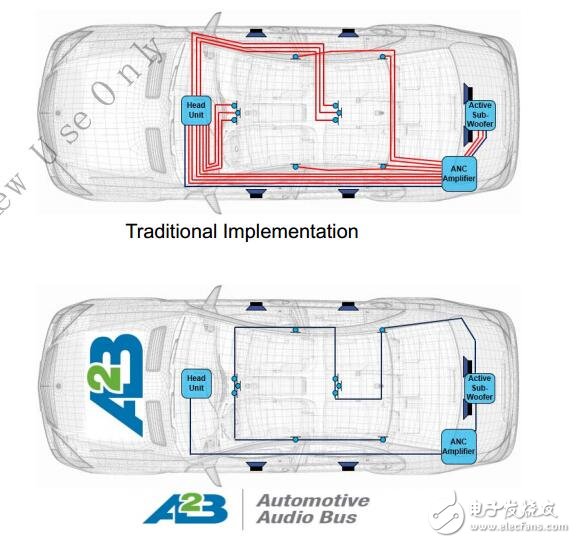
Comparison of A2B bus and traditional audio implementation 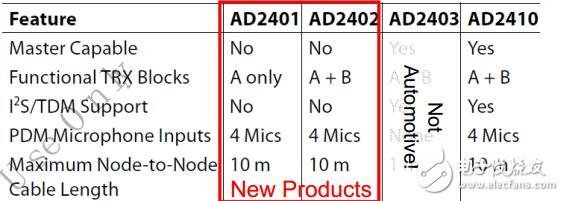

The advantages of A2B 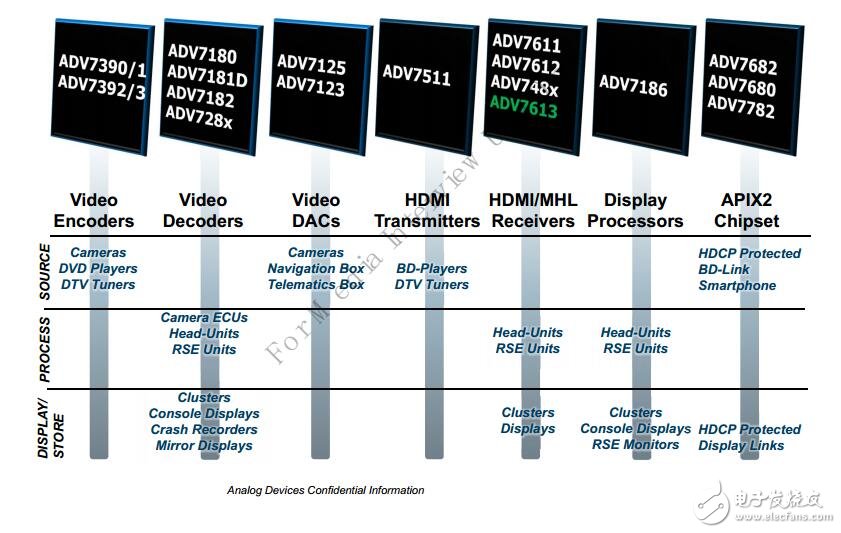
Rich video product line